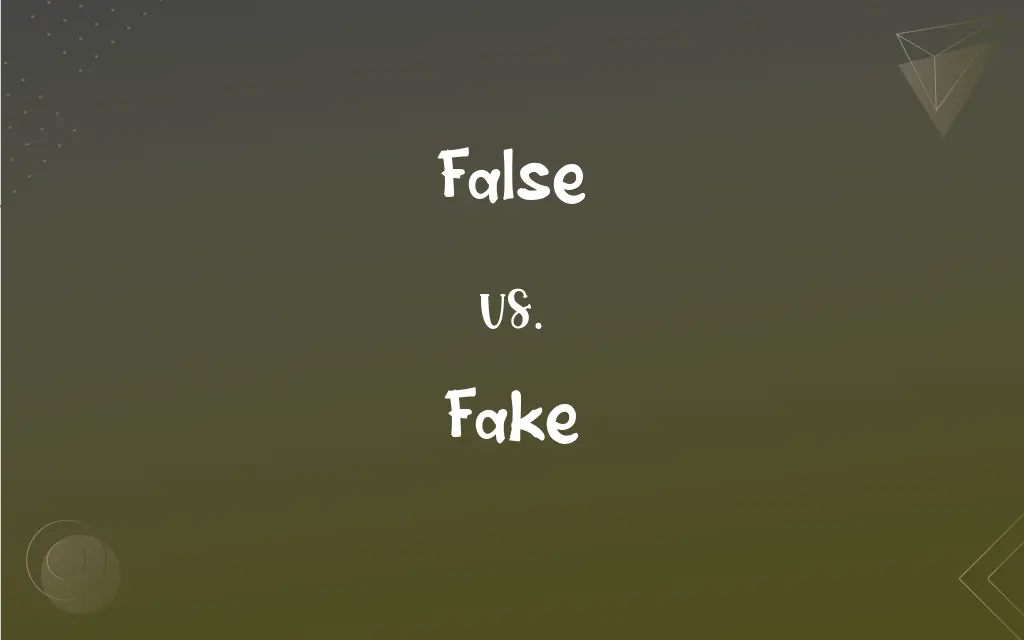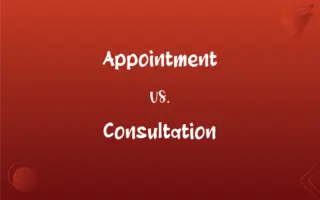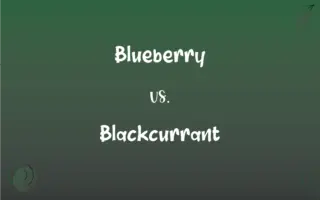False vs. Fake: What's the Difference?
By Aimie Carlson & Harlon Moss || Updated on March 4, 2024
"False" implies incorrectness or untruthfulness, often used in the context of statements or information, while "fake" refers to something made to deceive by imitating the appearance of something genuine.

Key Differences
The distinction between "false" and "fake" lies in their specific applications and connotations. "False" is primarily used to describe something that is not true or correct, such as information, statements, or beliefs. It conveys a lack of accordance with fact or reality, but does not necessarily imply an intention to deceive. On the other hand, "fake" carries a stronger implication of deception and imitation. It is often used to describe objects, materials, or documents that are designed to look like the real thing in order to deceive people.
While both "false" and "fake" imply a departure from the truth or authenticity, "fake" emphasizes the aspect of imitation and deceit, whereas "false" focuses on the incorrectness or inaccuracy of information or belief. This distinction is important in various contexts, from everyday communication to legal and academic discussions, where the accuracy of language can significantly impact interpretations and outcomes.
In the realm of ethics and morality, "false" statements or beliefs might be considered less culpable if they result from innocent error or misinformation. In contrast, producing or distributing "fake" items typically involves a clear ethical violation due to the intent to deceive. This ethical dimension highlights the importance of understanding and using these terms accurately, reflecting their nuanced differences in intent, authenticity, and truthfulness.
Comparison Chart
Primary Use
Describing incorrect information or beliefs.
Describing objects or documents intended to deceive.
Implication
Incorrectness or untruthfulness.
Deliberate imitation or deception.
ADVERTISEMENT
Example Contexts
False statement, false belief.
Fake ID, fake jewelry.
Ethical Connotation
May not imply intent to deceive.
Implies a deliberate attempt to deceive.
Focus
Lack of accordance with reality.
Effort to mimic or impersonate something genuine.
False and Fake Definitions
False
Erroneous or mistaken.
The false information led to confusion.
Fake
Counterfeit or forged.
The police confiscated fake currency.
ADVERTISEMENT
False
Contrary to fact or truth
False tales of bravery.
Fake
Artificial or not genuine.
Fake fur coats are popular among animal rights supporters.
False
Deliberately untrue
Delivered false testimony under oath.
Fake
Having a false or misleading appearance; fraudulent.
False
Arising from mistaken ideas
False hopes of writing a successful novel.
Fake
One that is not authentic or genuine; a sham.
False
Intentionally deceptive
A suitcase with a false bottom.
False promises.
Fake
(Sports) A brief feint or aborted change of direction intended to mislead one's opponent or the opposing team.
False
Not keeping faith; treacherous
A false friend.
Fake
One loop or winding of a coiled rope or cable.
False
Not genuine or real
False teeth.
False documents.
Fake
To contrive and present as genuine; counterfeit
Fake a signature.
False
Erected temporarily, as for support during construction.
Fake
To simulate; feign
Faked his death so his wife would collect insurance money.
False
Resembling but not accurately or properly designated as such
A false thaw in January.
The false dawn peculiar to the tropics.
Fake
(Music) To improvise (a passage).
False
(Music) Of incorrect pitch.
Fake
(Sports) To deceive (an opponent) with a fake. Often used with out.
False
Unwise; imprudent
Don't make a false move or I'll shoot.
Fake
To engage in feigning, simulation, or other deceptive activity.
False
(Computers) Indicating one of two possible values taken by a variable in Boolean logic or a binary device.
Fake
(Sports) To perform a fake.
False
In a treacherous or faithless manner
Play a person false.
Fake
To coil (a rope or cable).
False
Untrue, not factual, factually incorrect.
Fake
Not real; false, fraudulent
Which fur coat looks fake?
False
Based on factually incorrect premises.
False legislation, false punishment
Fake
(of people) Insincere
False
Spurious, artificial.
False teeth
Fake
Something which is not genuine, or is presented fraudulently.
I suspect this passport is a fake.
False
(logic) Of a state in Boolean logic that indicates a negative result.}}
Fake
(sports) A move meant to deceive an opposing player, used for gaining advantage for example when dribbling an opponent.
False
Uttering falsehood; dishonest or deceitful.
A false witness
Fake
(archaic) A trick; a swindle
False
Not faithful or loyal, as to obligations, allegiance, vows, etc.; untrue; treacherous.
A false friend, lover, or subject;
False to promises
Fake
(nautical) One of the circles or windings of a cable or hawser, as it lies in a coil; a single turn or coil.
False
Not well founded; not firm or trustworthy; erroneous.
A false conclusion;
A false construction in grammar
Fake
(transitive) To make a counterfeit, to counterfeit, to forge, to falsify.
False
Not essential or permanent, as parts of a structure which are temporary or supplemental.
Fake
(transitive) To make a false display of, to affect, to feign, to simulate.
To fake a marriage
To fake happiness
To fake a smile
False
Used in the vernacular name of a species (or group of species) together with the name of another species to which it is similar in appearance.
False scorpion (an arachnid)
False killer whale (a dolphin)
Fake
(archaic) To cheat; to swindle; to steal; to rob.
False
(music) Out of tune.
Fake
(archaic) To modify fraudulently, so as to make an object appear better or other than it really is
False
To incorrectly decode noise as if it were a valid signal.
Fake
To improvise, in jazz.
False
(obsolete) To violate, to betray (a promise, an agreement, one’s faith, etc.).
Fake
(nautical) To coil (a rope, line, or hawser), by winding alternately in opposite directions, in layers usually of zigzag or figure of eight form, to prevent twisting when running out.
False
(obsolete) To counterfeit, to forge.
Fake
One of the circles or windings of a cable or hawser, as it lies in a coil; a single turn or coil.
False
(obsolete) To make false, to corrupt from something true or real.
Fake
A trick; a swindle.
False
In a dishonest and disloyal way; falsely.
Fake
To coil (a rope, line, or hawser), by winding alternately in opposite directions, in layers usually of zigzag or figure of eight form,, to prevent twisting when running out.
False
One of two options on a true-or-false test.
The student received a failing grade for circling every true and false on her quiz.
Fake
To cheat; to swindle; to steal; to rob.
False
Uttering falsehood; unveracious; given to deceit; dishnest; as, a false witness.
Fake
To make; to construct; to do.
False
Not faithful or loyal, as to obligations, allegiance, vows, etc.; untrue; treacherous; perfidious; as, a false friend, lover, or subject; false to promises.
I to myself was false, ere thou to me.
Fake
To manipulate fraudulently, so as to make an object appear better or other than it really is; as, to fake a bulldog, by burning his upper lip and thus artificially shortening it.
False
Not according with truth or reality; not true; fitted or likely to deceive or disappoint; as, a false statement.
Fake
Something that is a counterfeit; not what it seems to be
False
Not genuine or real; assumed or designed to deceive; counterfeit; hypocritical; as, false tears; false modesty; false colors; false jewelry.
False face must hide what the false heart doth know.
Fake
A person who makes deceitful pretenses
False
Not well founded; not firm or trustworthy; erroneous; as, a false claim; a false conclusion; a false construction in grammar.
Whose false foundation waves have swept away.
Fake
(football) a deceptive move made by a football player
False
Not essential or permanent, as parts of a structure which are temporary or supplemental.
Fake
Make a copy of with the intent to deceive;
He faked the signature
They counterfeited dollar bills
She forged a Green Card
False
Not in tune.
Fake
Fake or falsify;
Fudge the figures
Cook the books
Falsify the data
False
Not truly; not honestly; falsely.
Fake
Talk through one's hat;
The politician was not well prepared for the debate and faked it
False
To report falsely; to falsify.
Fake
Fraudulent; having a misleading appearance
False
To betray; to falsify.
[He] hath his truthe falsed in this wise.
Fake
Not genuine or real; being an imitation of the genuine article;
It isn't fake anything; it's real synthetic fur
Faux pearls
False teeth
Decorated with imitation palm leaves
A purse of simulated alligator hide
False
To mislead by want of truth; to deceive.
In his falsed fancy.
Fake
Made to deceive by imitation.
She discovered the painting was a fake.
False
To feign; to pretend to make.
Fake
Pretending to be something else.
His bravery was just a fake demeanor.
False
Not in accordance with the fact or reality or actuality;
Gave false testimony under oath
False tales of bravery
Fake
Nonexistent, yet claimed to be real.
The supposed miracle cure was fake.
False
Arising from error;
A false assumption
A mistaken view of the situation
False
Erroneous and usually accidental;
A false start
A false alarm
False
Deliberately deceptive;
Hollow (or false) promises
False pretenses
False
Inappropriate to reality or facts;
Delusive faith in a wonder drug
Delusive expectations
False hopes
False
Not genuine or real; being an imitation of the genuine article;
It isn't fake anything; it's real synthetic fur
Faux pearls
False teeth
Decorated with imitation palm leaves
A purse of simulated alligator hide
False
Designed to deceive;
A suitcase with a false bottom
False
Inaccurate in pitch;
A false (or sour) note
Her singing was off key
False
Adopted in order to deceive;
An assumed name
An assumed cheerfulness
A fictitious address
Fictive sympathy
A pretended interest
A put-on childish voice
Sham modesty
False
(used especially of persons) not dependable in devotion or affection; unfaithful;
A false friend
When lovers prove untrue
False
In a disloyal and faithless manner;
He behaved treacherously
His wife played him false
False
Not true or correct.
The rumor about the store closing was false.
False
Misleading by being incorrect.
He was guided by false assumptions.
False
Inauthentic emotion or action.
Her concern was false and manipulative.
False
Invalid or void.
The contract was declared false due to misleading terms.
FAQs
How does intent play a role in distinguishing false from fake?
Intent is key; "false" may not imply intent to deceive, whereas "fake" usually involves a deliberate effort to mimic or trick.
Is it worse to spread false information or fake objects?
Both can have serious consequences, but fake objects, due to their intent to deceive, often carry a more direct ethical violation.
Can a belief be considered fake?
Beliefs are more commonly described as false when incorrect; "fake" would imply the belief is intentionally adopted to deceive others, which is less typical for personal beliefs.
Can art be fake or only false?
Art can be described as fake if it's a deliberate forgery or counterfeit. Describing art as false is less common, unless referring to misleading attributions or interpretations.
How do social media platforms address false and fake content?
Social media platforms implement policies and technologies to identify and reduce the spread of both false information and fake content, employing fact-checkers and algorithms to flag or remove deceptive material.
Can something be false and fake simultaneously?
Yes, an item or statement can be both false and fake if it is incorrect and intentionally made to deceive.
Can technology itself generate false or fake information?
While technology aids in detecting misinformation, it can also generate false or fake content, as seen with deepfakes and AI-generated texts, posing challenges to distinguishing between real and artificial creations.
How can consumers protect themselves from false claims and fake products?
Consumers can protect themselves by researching brands, verifying sources, using skepticism towards too-good-to-be-true offers, and relying on reputable information and product sources.
How do legal systems treat false versus fake claims or items?
Legal systems often impose stricter penalties for distributing fake items (like counterfeit goods) due to the fraud and deception involved, compared to false claims, which might be addressed under libel, slander, or misinformation laws depending on the context and intent.
What are the psychological effects of being exposed to false or fake information?
Exposure to false or fake information can lead to confusion, mistrust, and erosion of public discourse, highlighting the importance of critical thinking and media literacy.
What measures can educational institutions take to combat false and fake information?
Educational institutions can combat false and fake information by incorporating media literacy into curricula, teaching critical thinking skills, and fostering an environment that encourages questioning and verification of sources.
Why is distinguishing between false and fake important in journalism?
In journalism, accuracy and integrity are paramount; distinguishing between false information (errors or inaccuracies) and fake news (deliberately fabricated stories) is crucial for maintaining credibility and informing the public responsibly.
Are there cultural differences in how false and fake information is perceived?
Yes, cultural differences can affect the perception of false and fake information, with varying levels of skepticism, trust in media, and legal consequences influencing how societies respond to and manage misinformation and deceit.
What psychological tactics do creators of fake items use to deceive consumers?
Creators of fake items often exploit psychological tactics such as appealing to emotions, mimicking authentic cues, and offering too-good-to-be-true deals to manipulate consumer perception and trust.
What role does technology play in detecting false and fake information?
Technology, through the use of algorithms, artificial intelligence, and machine learning, plays a significant role in identifying and filtering false information and fake content online, enhancing the ability to maintain the integrity of information on digital platforms.
How do false and fake information impact political discourse?
False and fake information can significantly impact political discourse by shaping public opinion based on inaccuracies or deliberate lies, potentially influencing election outcomes and public policy debates.
What are the environmental impacts of producing and disposing of fake products?
Producing and disposing of fake products can have significant environmental impacts, including waste from inferior materials, pollution from unregulated manufacturing processes, and the depletion of resources used in counterfeit goods.
How do false and fake information affect public health?
False and fake information can have serious public health implications by spreading misinformation about diseases, treatments, and health measures, leading to harmful behaviors and undermining trust in health authorities.
How do individuals' biases influence their susceptibility to false and fake information?
Individual biases, such as confirmation bias and cognitive dissonance, can make people more susceptible to believing and spreading false and fake information that aligns with their preexisting beliefs or opinions, underscoring the importance of self-awareness and open-mindedness in evaluating information.
How does the spread of false information differ from the distribution of fake products?
The spread of false information primarily occurs through verbal, written, or digital communication channels, often rapidly and widely, while the distribution of fake products involves physical creation and sale, requiring different methods for dissemination and detection.
About Author
Written by
Aimie CarlsonAimie Carlson, holding a master's degree in English literature, is a fervent English language enthusiast. She lends her writing talents to Difference Wiki, a prominent website that specializes in comparisons, offering readers insightful analyses that both captivate and inform.
Co-written by
Harlon MossHarlon is a seasoned quality moderator and accomplished content writer for Difference Wiki. An alumnus of the prestigious University of California, he earned his degree in Computer Science. Leveraging his academic background, Harlon brings a meticulous and informed perspective to his work, ensuring content accuracy and excellence.































































